skywatcher
New Member
- Joined
- Apr 25, 2020
- Messages
- 4,446
- Likes
- 1,344
VideoiSpace update: continuous variant thrust 200 seconds test on 8 July 2020
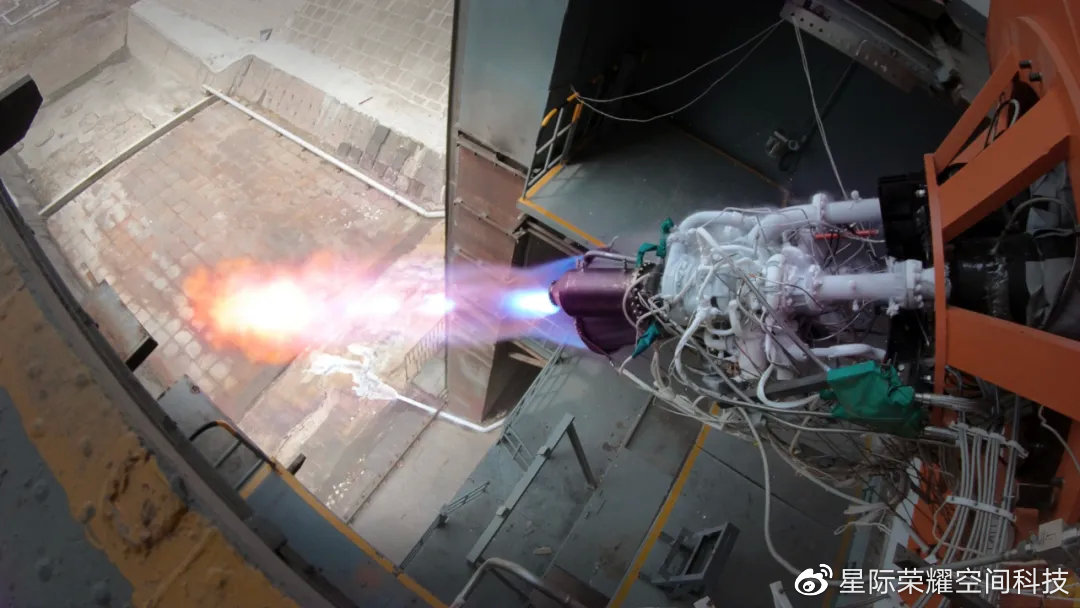
VideoiSpace update: continuous variant thrust 200 seconds test on 8 July 2020

Towards GTO orbit.A Long March 3B rocket launched an Apstar-6D high throughput wideband communication satellite on 9 July 2020.
It is the 339 flight of Long March series.

A Kuaizhou 11 rocket demo launch failed before reaching orbit on 10 July 2020. Kuaizhou 11 is a small quick response solid rocket developed by Expace.A Long March 3B rocket launched an Apstar-6D high throughput wideband communication satellite on 9 July 2020.
It is the 339 flight of Long March series.
 en.wikipedia.org
en.wikipedia.org
The pic is Long March 11 from a sea launch pad. Not Kuaizhou 11.
Update: Landspace second stage TQ-11 3000 seconds compatibility test with the control system on 14 July 2020.Update: Landspace 10 ton thrust methalox engine TQ-11 completed 2,000s test on 5 June 2020. The longest ever single hot test of methalox engine on a domestic level.

The 80 ton thrust TQ-12 and 10 ton thrust TQ-11 methalox engines will be used on the liquid rocket Zhuque-2 scheduled for maiden flight in early 2021.
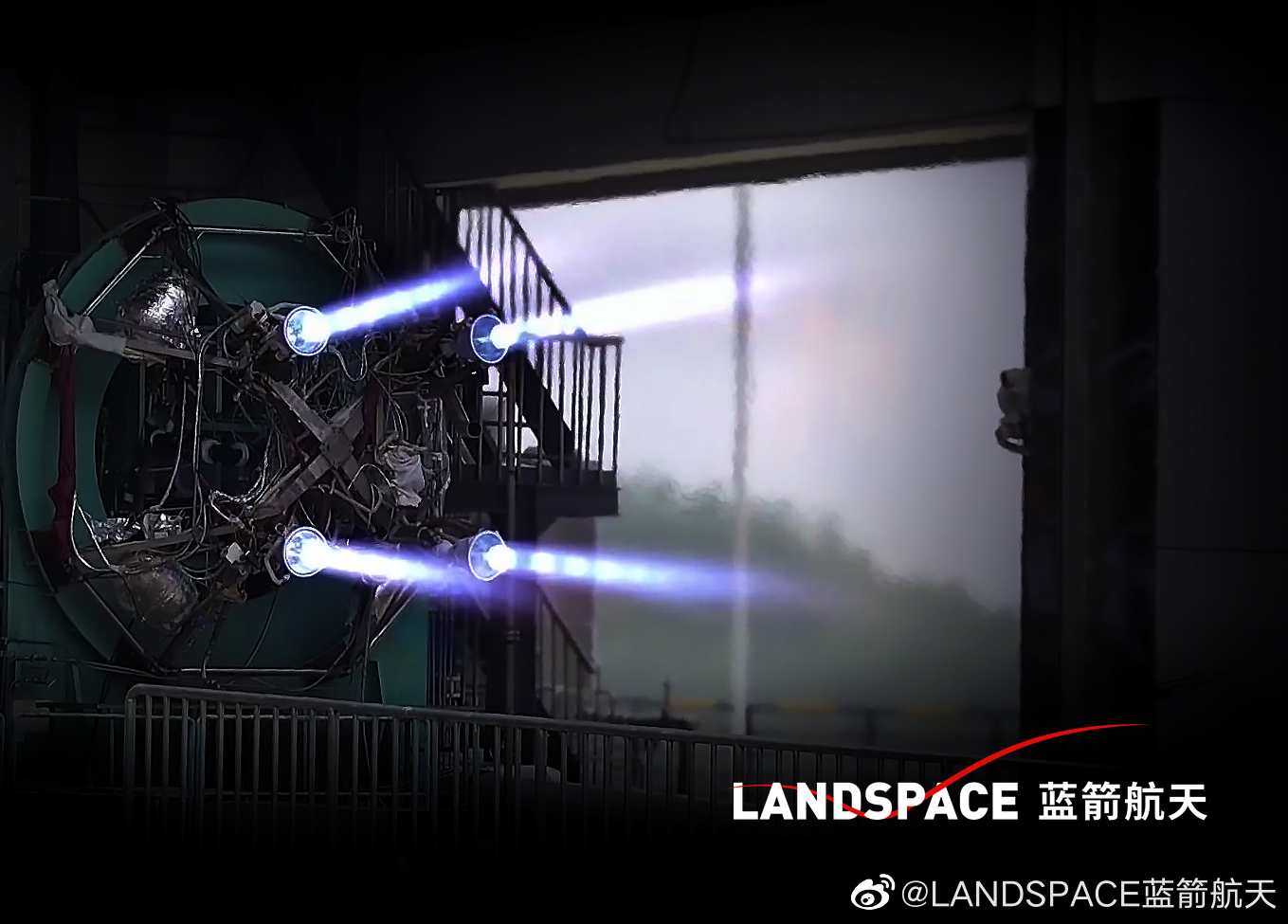
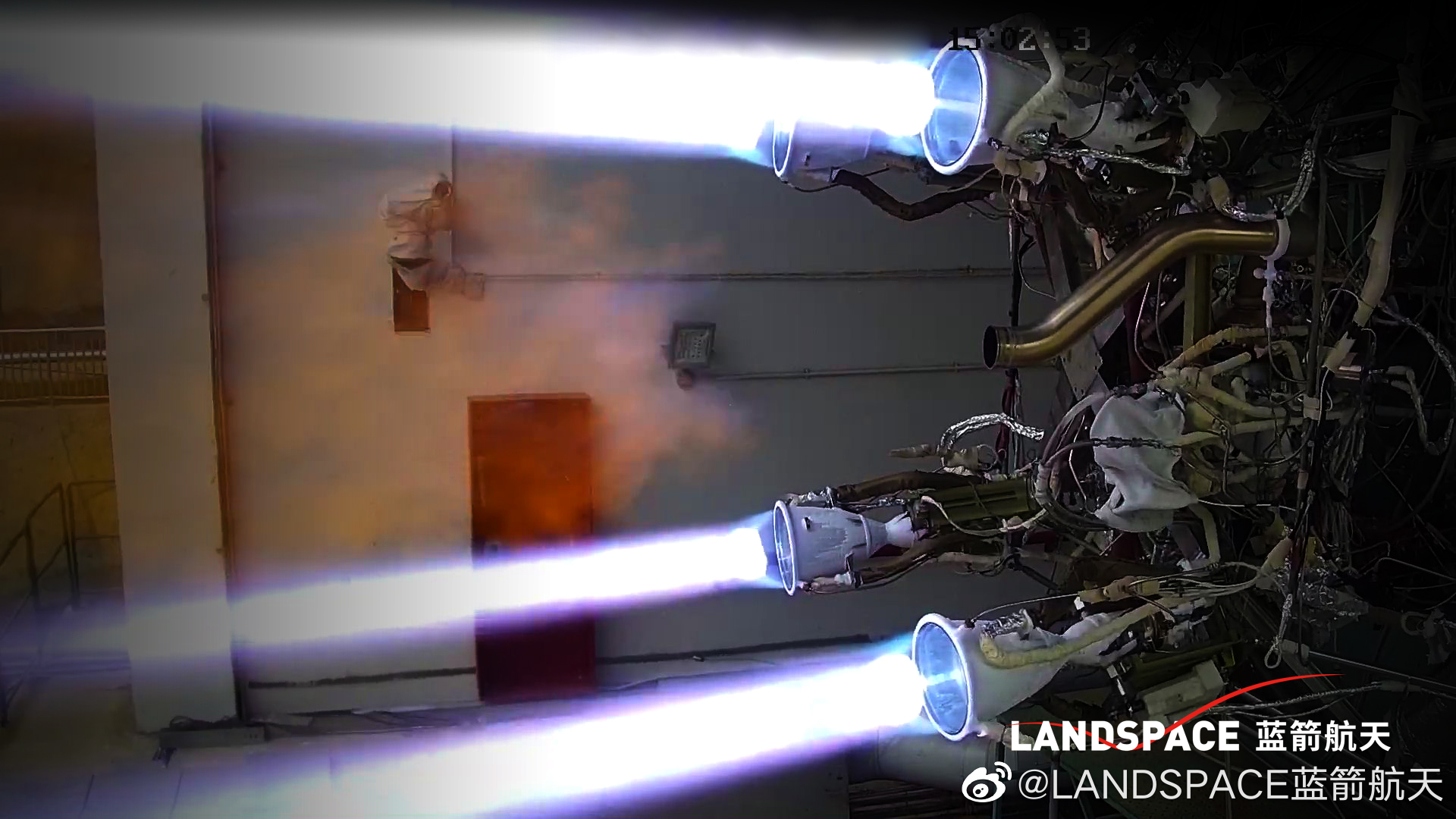
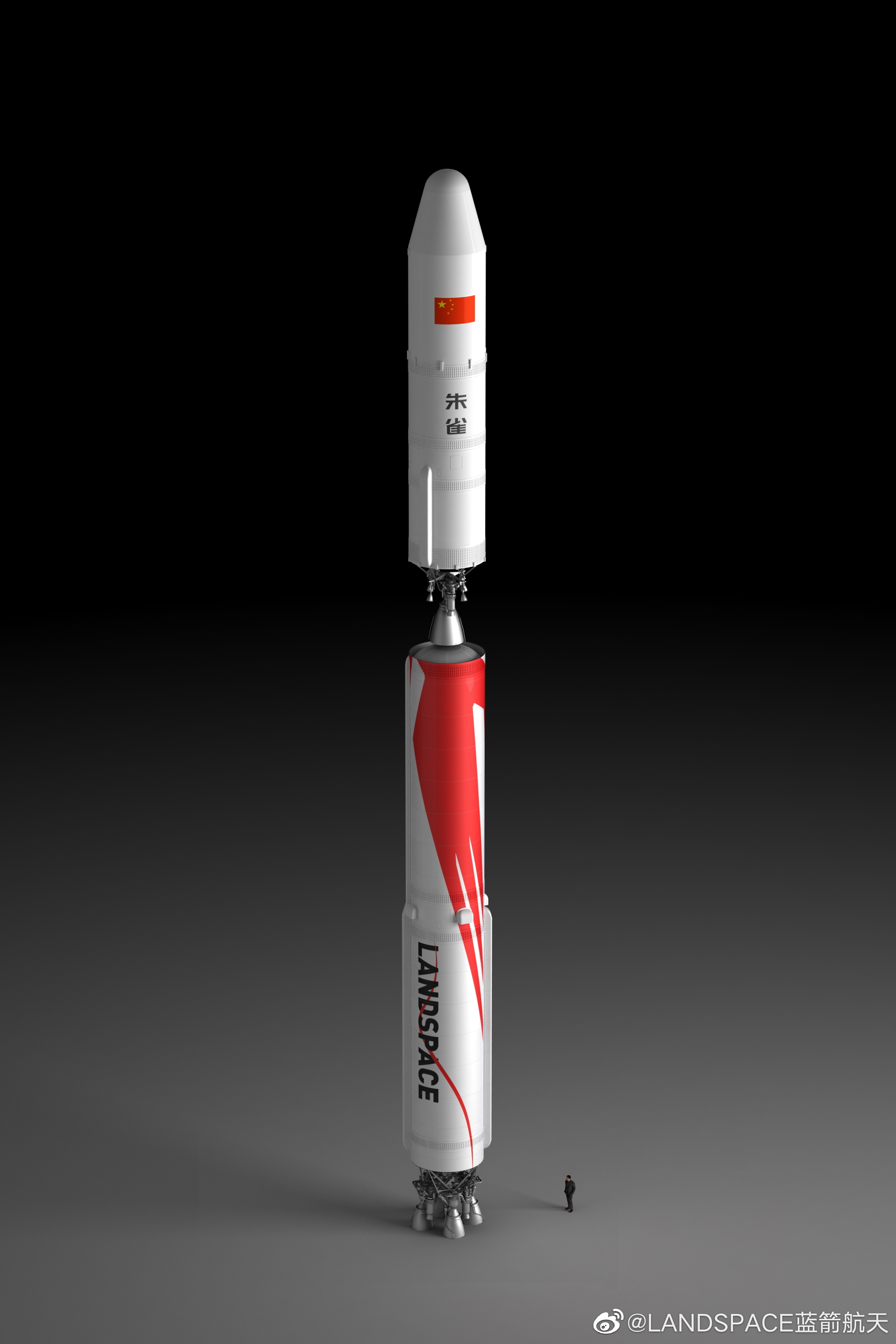
China's Long March 5 rocket rolled out today for July 23 missionThe Long March 5 heavy will launch the Tianwen-1 Mars mission to attempt China’s first landing
on Mars on 23 July 2020. The robotic mission includes an orbiter, a lander and a mobile rover to explore the surface of Mars.

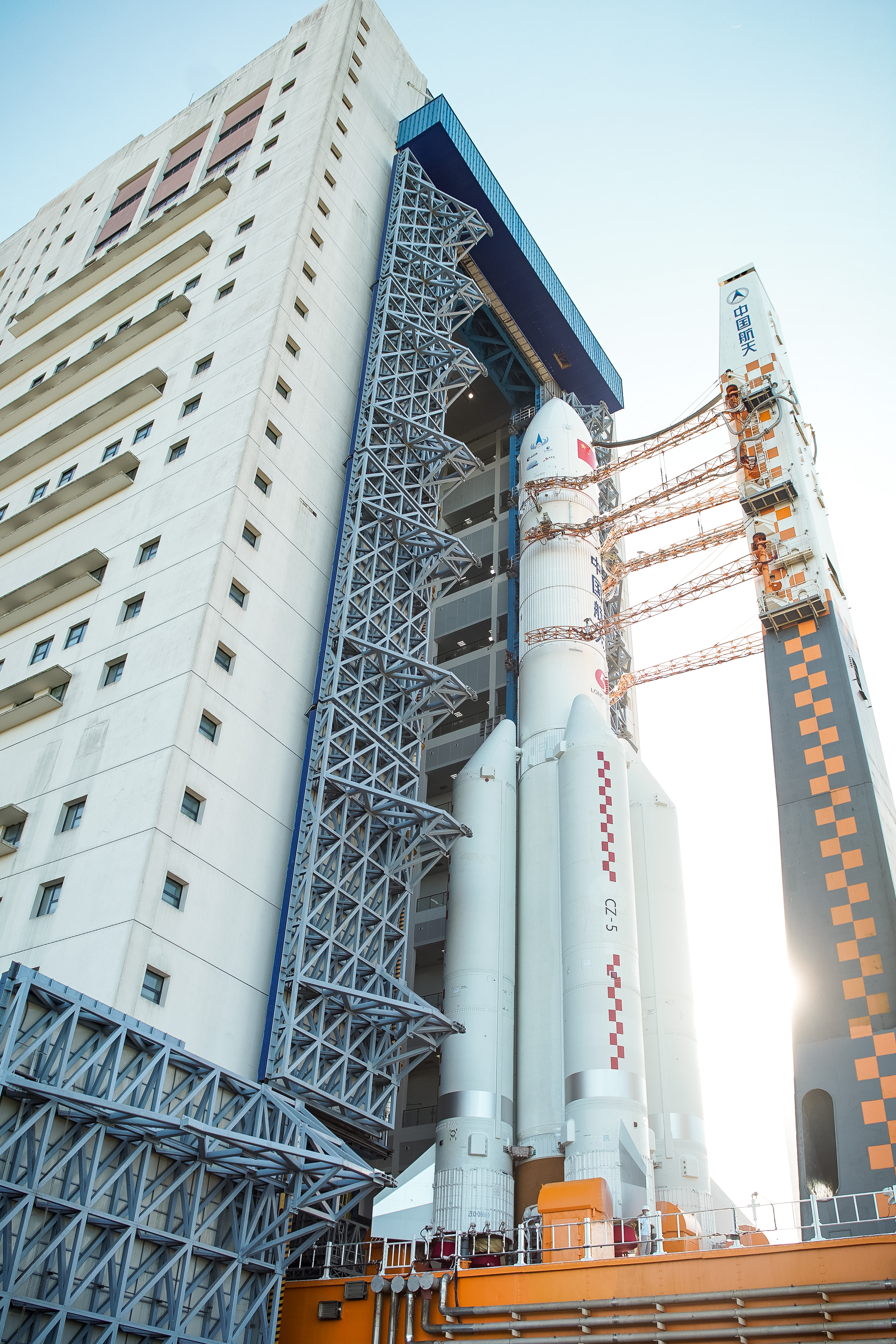

iSpace update: second JD-1 200 seconds continuous global variable thrust test on 17 July 2020iSpace update: continuous variant thrust 200 seconds test on 8 July 2020


Mission insigniaChina's Long March 5 rocket rolled out today for July 23 mission

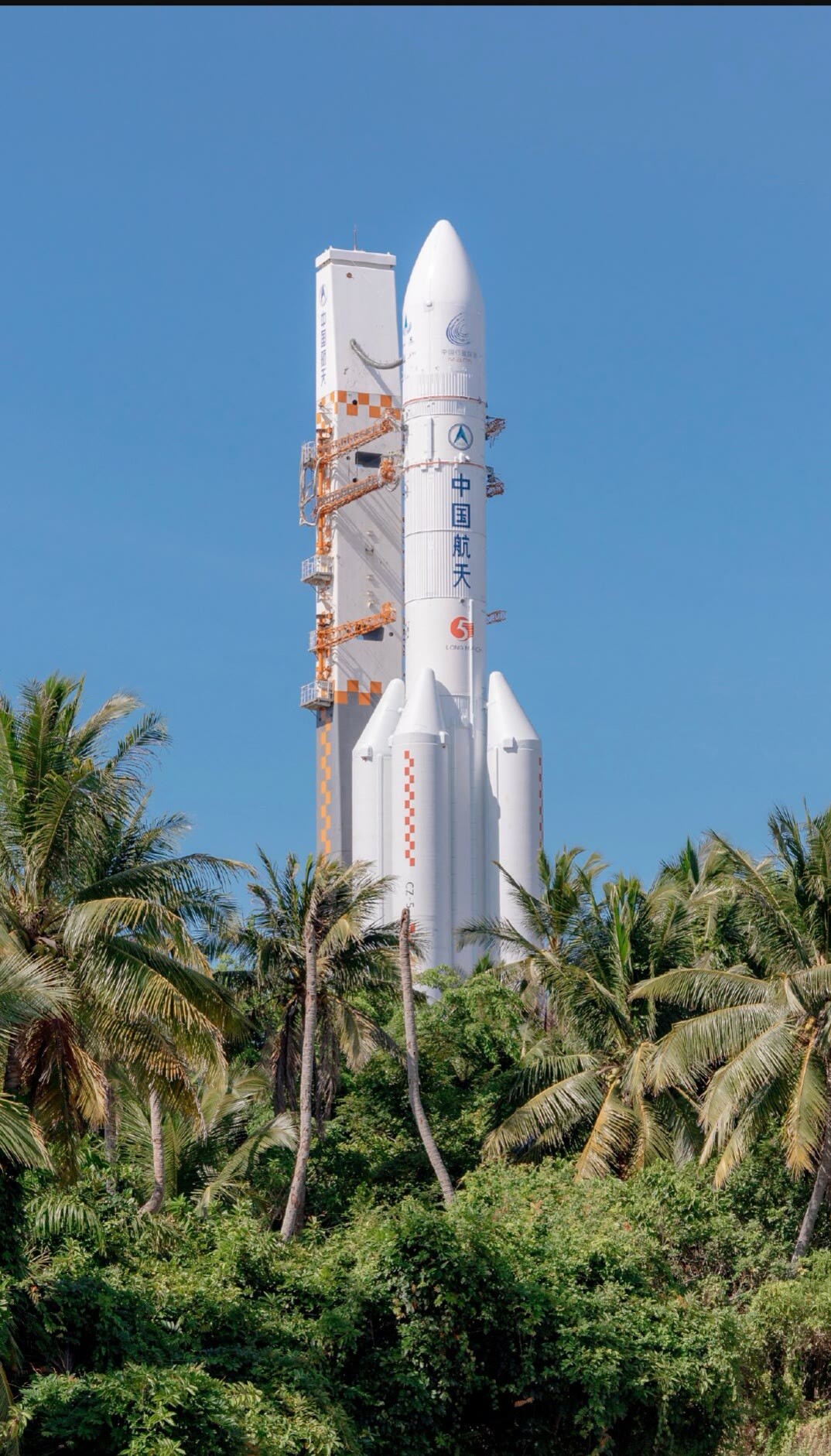
Landspace update: TQ-11 ±25° gimbaling test on 17 July 2020Update: Landspace second stage TQ-11 3000 seconds compatibility test with the control system on 14 July 2020.


Name: Zhuque-2
Fuel: liquid methane and liquid oxygen
Hight: 49.5 m
Diameter: 3.35 m
Lift off thrust: 268 tons
Lift off mass: 216 tons
LEO: 6 tons (200 km)
SSO: 4 tons (500 km)
First flight: Early 2021

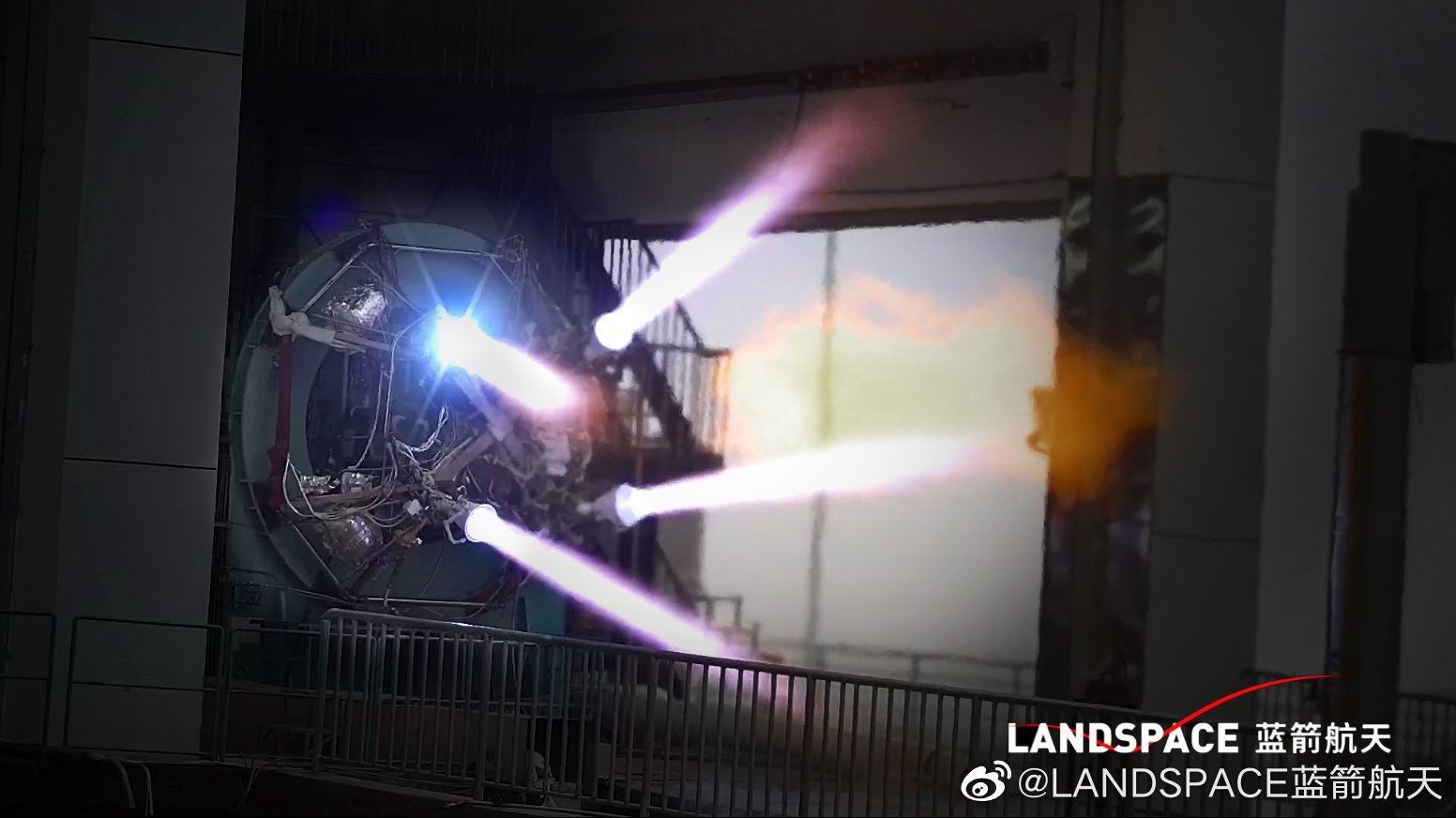


 spacenews.com
spacenews.com

 spacenews.com
spacenews.com
screenshot pic of Tianwen Mars rover full scale mockup
Long March 5 rolled out for July 23 launch of China’s Tianwen-1 Mars mission
China is preparing to launch its Tianwen-1 Mars orbiter and rover next week with the rollout of the mission’s Long March 5 launch vehicle.spacenews.com
China moves massive rocket into place for ambitious Mars shot
China’s heaviest rocket has rolled to its launch pad for liftoff Thursday with the country’s first Mars landing mission, an ambitious attempt to place an orbiter around the Red Planet and a robotic rover on the Martian surface in early 2021.
The Tianwen-1 orbiter carries seven science payloads. It is equipped with a high-resolution camera comparable to HiRise on board NASA’s Mars Reconnaissance Orbiter. It also carries a medium-resolution camera, subsurface radar, mineralogy spectrometer, neutral and energetic particle analyzers and a magnetometer. The orbiter, designed to operate for one Mars year, or 687 Earth days, will also play a relay role for the mission rover.
The roughly 240-kilogram solar-powered rover is nearly twice the mass of China’s ‘Yutu’ lunar rovers. It will carry a ground-penetrating radar, multispectral camera and a Laser Induced Breakdown Spectroscopy instrument. Other payloads will analyze the climate and magnetic environment. The rover will attempt to land in a southern section of Utopia Planitia where it is designed to operate for 90 Mars days.
The Chinese mission, named Tianwen 1, is the second of three probes taking aim on the Red Planet this month, when Mars is properly positioned in its orbit around the sun to allow a direct journey from Earth. Such launch opportunities only come about once every 26 months.
A Mars orbiter named Hope developed by the United Arab Emirates in partnership with U.S. scientists successfully launched Sunday aboard a Japanese H-2A rocket. NASA’s Perseverance rover is scheduled for liftoff from Cape Canaveral on an Atlas 5 rocket July 30.
The UAE, Chinese and U.S. missions are all due to arrive at Mars in February 2021.
A Long March 5 rocket is set for liftoff with China’s Tianwen 1 mission some time between 12 a.m. and 3 a.m. EDT (0400-0700 GMT) Thursday, according to public notices warning ships to steer clear of downrange drop zones along the launcher’s flight path.
The launch will be the first operational flight of China’s Long March 5 rocket, the most powerful launch vehicle in the country’s inventory. Ground crews at the Wenchang Space Launch Center on Hainan Island — China’s newest launch site — transferred the Long March 5 rocket to its launching stand Friday for final pre-flight checkouts.
China has launched four Long March 5 rockets since the heavy-lift launcher debuted in 2016. Three of the four missions have been successful, including the last two test flights.
Most recently, China has landed two rovers (Yutu-1 in 2013 and Yutu-2 in 2020) on the moon , including the first to explore the surface of the lunar far side. The next Chinese lunar mission, named Chang’e 5, is scheduled for launch late this year on a mission to return samples from the moon.
Chinese officials announced the Tianwen name for the country’s planetary missions in April. The name Tianwen comes from the work of ancient Chinese poet Qu Yuan (340–278 BC), meaning “quest for heavenly truth,” according to the China National Space Administration, or CNSA, the country’s space agency.
“The country’s first Martian probe will conduct scientific investigations about the Martian soil, geological structure, environment, atmosphere, as well as water,” CNSA said in a statement.
The entire Tianwen 1 spacecraft weighs about 11,000 pounds, or 5 metric tons, fully fueled for launch, according to the mission summary in Nature Astronomy.
Assuming a successful launch this month, the spacecraft will enter orbit around Mars in February 2021, eventually settling in a loop around the Red Planet ranging between 165 miles (265 kilometers) and nearly 7,500 miles (12,000 kilometers) over the Martian poles.
As soon as next April, the lander and rover modules will detach from the orbiter to begin a descent through the Martian atmosphere. The prime candidate for the Tianwen 1 mission’s landing site is in Utopia Planitia, a broad plain in the northern hemisphere of Mars where radar soundings from orbit have indicated the presence of a reservoir of ice containing as much water as Lake Superior, the largest of the Great Lakes.
The Tianwen 1 rover weighs about 529 pounds, or 240 kilograms, nearly twice the mass of China’s Yutu rovers on the moon.
The orbiter is designed to operate for at least one Martian year, or about two years on Earth. The solar-powered rover, fitted with six wheels for mobility, has a life expectancy of at least 90 days, Chinese officials said.
Chinese scientists say the Tianwen 1 mission will perform a global survey of Mars, measuring soil and rock composition, searching for signs of buried water ice, and studying the Martian magnetosphere and atmosphere. The orbiter and rover will also observe Martian weather and probe Mars’s internal structure.
The orbiter’s seven instruments include a:
The Tianwen 1 rover is cocooned inside a heat shield for a fiery descent to the Martian surface. After releasing from the orbiter mothership, the lander will enter the Red Planet’s atmosphere, deploy a parachute, then fire a braking rocket to slow down for landing.
- Medium-Resolution Camera
- High-Resolution Camera
- Mars-Orbiting Subsurface Exploration Radar
- Mars Mineralogy Spectrometer
- Mars Magnetometer
- Mars Ion and Neutral Particle Analyzer
- Mars Energetic Particle Analyzer
“Tianwen 1 is going to orbit, land and release a rover all on the very first try, and coordinate observations with an orbiter,” Wan, the late chief scientist for China’s Mars program, wrote in Nature Astronomy. “No planetary missions have ever been implemented in this way. If successful, it would signify a major technical breakthrough.
“Scientifically, Tianwen 1 is the most comprehensive mission to investigate the Martian morphology, geology, mineralogy, space environment, and soil and water-ice distribution.”
The rover’s six science payloads include a:
- Multispectral Camera
- Terrain Camera
- Mars-Rover Subsurface Exploration Radar
- Mars Surface Composition Detector
- Mars Magnetic Field Detector
- Mars Meteorology Monitor
When it takes off, ten liquid-fueled engines will power the Long March 5 rocket and Tianwen 1 off the launch pad with nearly 2.4 million pounds of thrust.
The Long March 5’s flight path will take the rocket east from Hainan Island over the South China Sea, where it will drop its four-strap on boosters — each powered by two kerosene-fueled YF-100 engines — around three minutes after liftoff. Unlike launches from China’s inland spaceports, missions originating from Wenchang follow trajectories over the sea, allowing rockets to jettison stages over water rather than over land.
Two YF-77 engines on the Long March 5’s core stage will burn super-cold liquid hydrogen and liquid oxygen propellants for nearly eight minutes. During the first stage burn, the Long March 5 will jettison its clamshell-like payload fairing once the launcher climbs above the thick, lower layers of the atmosphere.
Two restartable hydrogen-fueled YF-75D engines drive the Long March 5’s second stage. The second stage engines are expected to perform two firings before deploying Tianwen 1 on its trajectory toward Mars.
The Long March 5 is capable of delivering 14 metric tons to geostationary transfer orbit, 8.2 tons to trans-lunar injection, or 6 tons to trans-Mars injection. Tianwen-1 has a mass of around 5 tons.
The fifth Long March 5 is expected to launch the Chang’e-5 lunar sample return late this year. The second launch of the Long March 5B, a variant for LEO launches, will then launch the core module of the Chinese Space Station as soon as early 2021.

Long March 5 rolled out for July 23 launch of China’s Tianwen-1 Mars mission
China is preparing to launch its Tianwen-1 Mars orbiter and rover next week with the rollout of the mission’s Long March 5 launch vehicle.spacenews.com
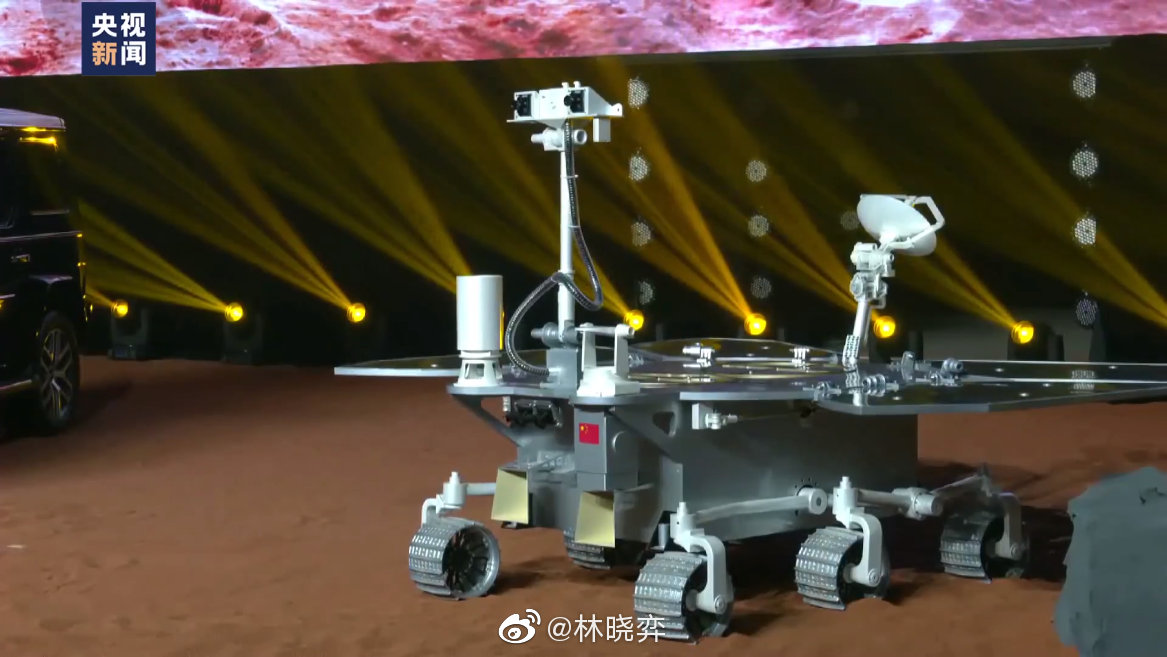
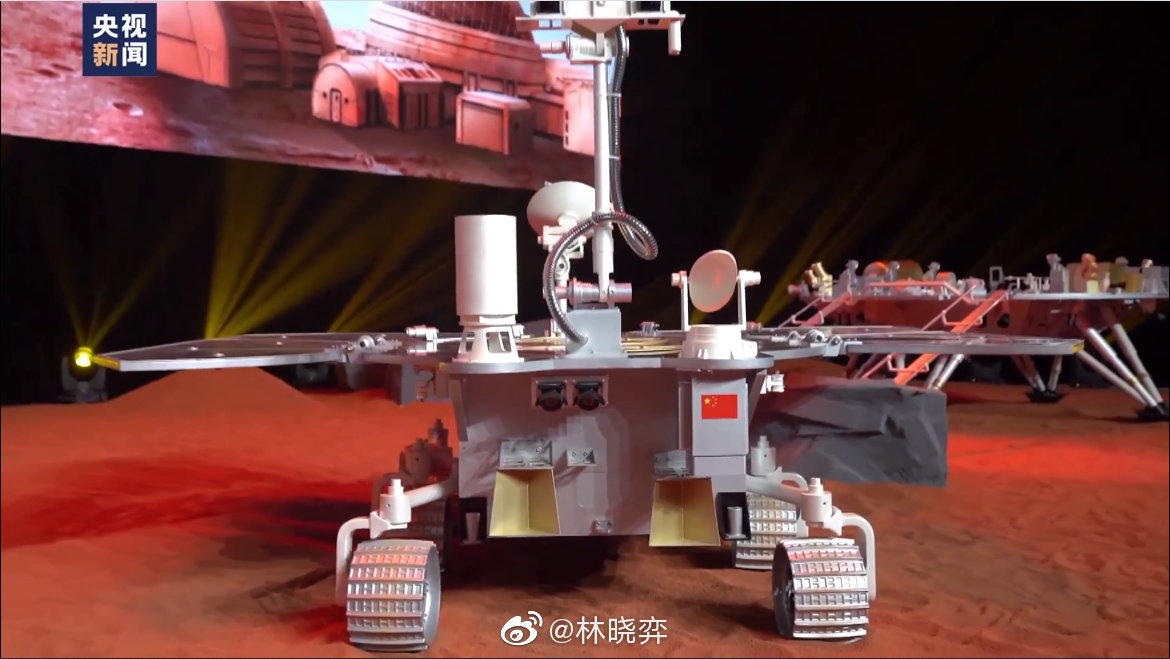
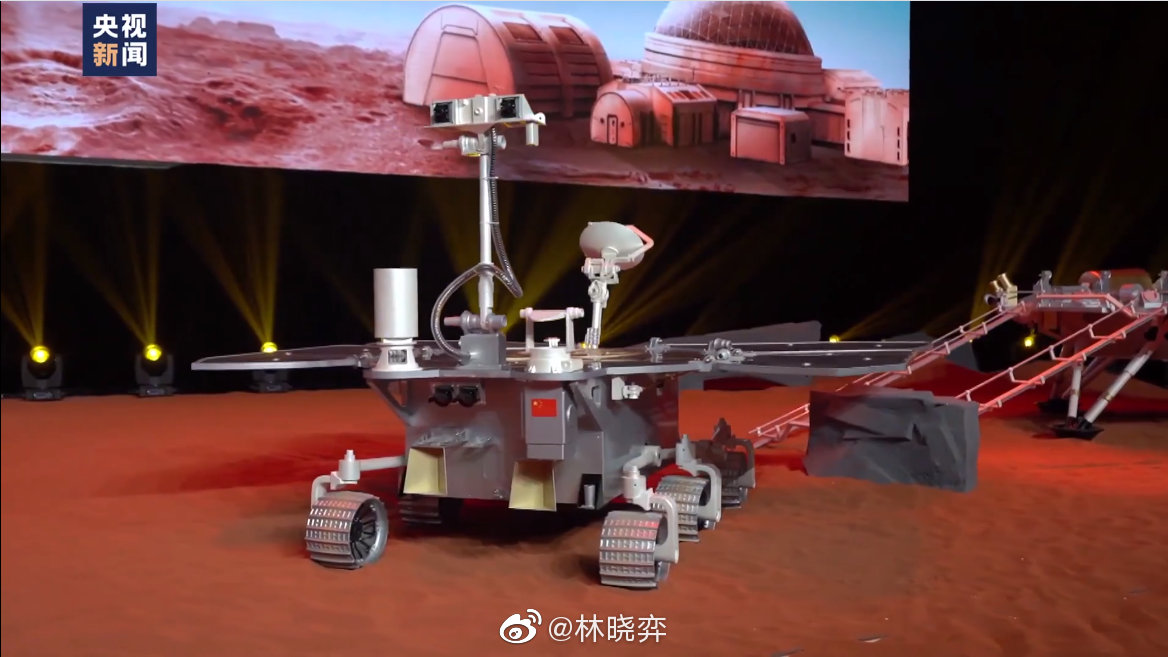
correction:screenshot pic of Tianwen Mars rover full scale mockup
Height: 1.8 meters
Mass: 240 kg



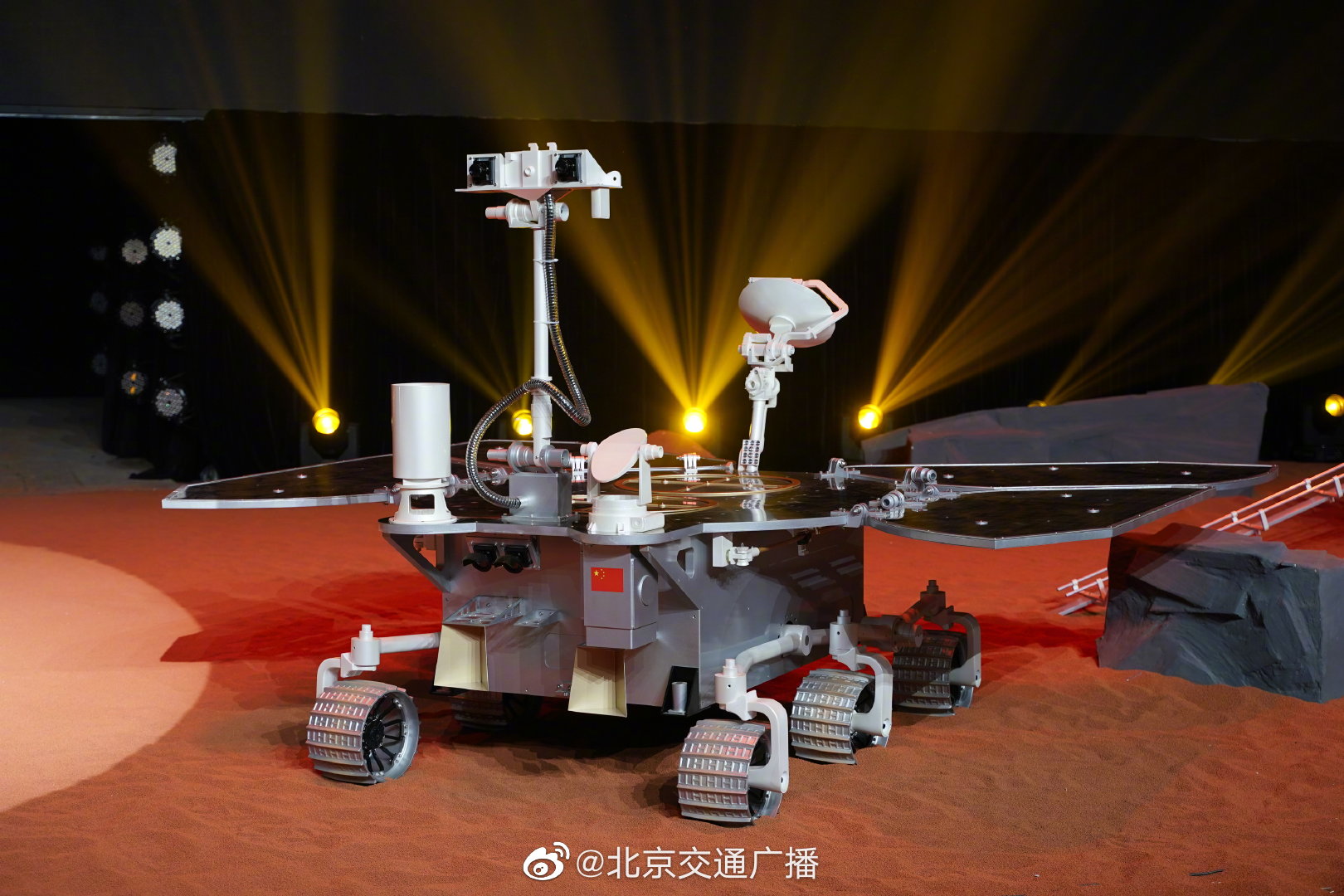


It should be noted that there are considerable disctinctions between the mockup and the real rover in appearance because many detailed were removed for simplification.correction:
Height: 1.85 meters
Mass: 240kg

full scale mockup of Tianwen Mars lander and rover size comparison




It should be noted that there are considerable disctinctions between the mockup and the real rover in appearance because many details are removed for simplification.correction:
Height: 1.85 meters
Mass: 240kg

full scale mockup of Tianwen Mars lander and rover size comparison




A Long March 5 rocket launched the Tianwen-1 Mars mission to attempt China’s first landing on Mars on 23 July 2020. The robotic mission includes an orbiter, a lander and a mobile rover to explore the surface of Mars.A Long March 3B rocket launched an Apstar-6D high throughput wideband communication satellite on 9 July 2020.
It is the 339 flight of Long March series.
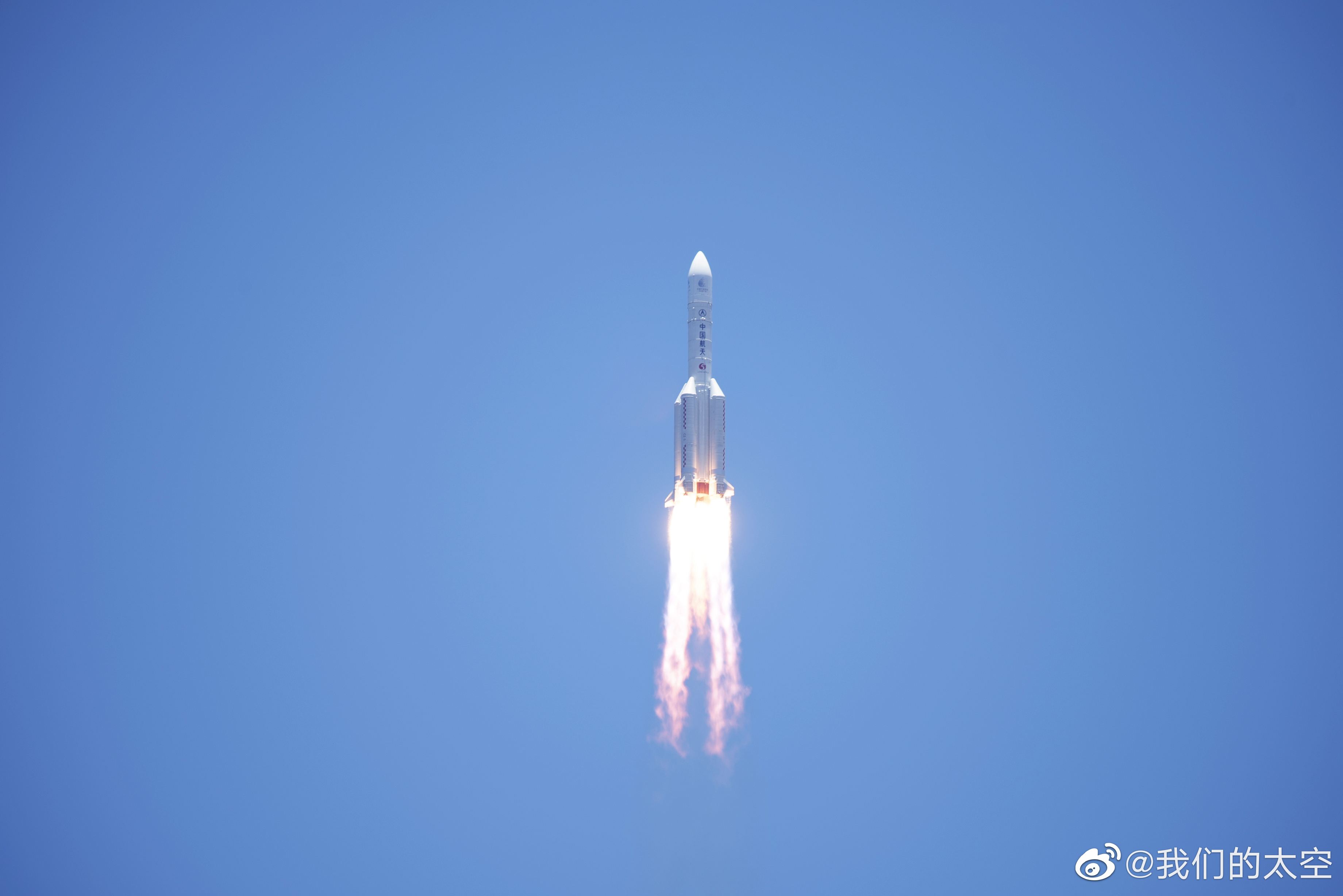
A Long March 5 rocket launched the Tianwen-1 Mars mission to attempt China’s first landing on Mars on 23 July 2020. The robotic mission includes an orbiter, a lander and a mobile rover to explore the surface of Mars.
It is the 340 flight of Long March series.

Coming up next:
A Long March 4B rocket will launch a Ziyuan-03 optical 3D mapping satellite on 25 July 2020.
| Thread starter | Similar threads | Forum | Replies | Date |
|---|---|---|---|---|
|
|
Maldives : News, Updates & Discussions. | Subcontinent & Central Asia | 2 | |
|
|
Latin America : News , Updates & Discussions. | Americas | 7 | |
|
|
European Union(EU) Politics - News, views and Updates | Europe and Russia | 7 | |
|
|
EU : News , Discussions & Updates. | Europe and Russia | 0 |
